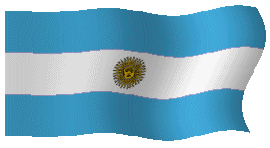
B"H
Jewish  Tours
Tours
 Buenos Aires, Argentina
Buenos Aires, Argentina

|
The Eichmann trial's cataclysmic effect on the world
Op-ed: 55 years ago, the architect of the "Final Solution" was tried in
Jerusalem; Noah Klieger, an Auschwitz survivor, was there as a
journalist and explains that it made the world understand the extent of
the Nazis' crimes.
Noah Klieger|Published:
26.04.16 , 23:12
In April 1961, 55 years ago, a veritable earthquake took place that
didn't strike just Israel, but also the entire civilized world. No,
cities didn't crumble, buildings didn't collapse, and the earth didn't
split open. There also weren't any casualties. Nevertheless, this was
one of the largest earthquakes in human history.Because in April 1961,
we finally understood, in Israel and throughout the world, what the
Germans had done.
We finally understood how an advanced, developed, modern people, after
years-long precise preparations, murdered millions of Jews in cold
blood.
The trial of the architect of the "Final Solution," Adolf Eichmann,
echoed throughout the entire world from the small courtroom in Beit
Ha'am in the center of Jerusalem.
From that location, the truth went out of the Germans' actions during
the 30s and the beginning of the 40s of the last century.
And when the prosecutor, Gideon Hausner, said his unforgettable opening
words, "I stand here with six million accusers," the entire world
understood what had happened in more than 2,000 forced-labor camps,
ghettoes and a mere six extermination camps, only a few years ago.
There is no doubt that putting the arch-murderer on trial opened the
world's eyes, even in Israel. Tami Raveh, Hausner's daughter, who was
then a young girl, told that when her father would try to explain to her
and her friends the atrocities that took place in the camps, tears would
always fall from his eyes. "So I studied the subject," she said.
As a journalist who, along with other colleagues at Yedioth Ahronoth,
covered the trial that brought hundreds of members of the press from all
over the world to Israel, I remember well every detail of the sessions.
From the spine-tingling words of Yehiel De-Nur (the writer Ka-tzetnik),
who fainted while testifying, to the testimony of the police officer
from the Eichmann investigation team, Miki Goldman, himself an Auschwitz
survivor.
As a German speaker, I also remember every word of the ruthless
murderer, who tried, as had his partners and friends in the ranks of the
SS, to explain that he was merely following orders. "As a soldier, I
could not refuse orders," said the man in a glass cage to the judges,
and also to the millions across the world who were following the trial.
That trial persuaded veteran Israelis—members of the Old Yishuv—and the
hundreds of thousands who had immigrated since the establishment of the
state that all of us, the survivors, had indeed been telling the truth
and that none of us had "invented" a thing.
My colleague and friend, the late Aviezer Golan, one of the greats of
Israeli journalism, told me in one of the first days of the trial that,
up until that point, he thought that I had been exaggerating in my
stories of the hell of Auschwitz. "Not only did you not exaggerate, you
didn't even manage to tell the whole story," he said. Incidentally,
Golan was one of the two Israeli journalists allowed to be present at
Eichmann's execution.
Fifty-five years have passed. Eichmann, like the great majority of the
Nazi murderers, is no longer alive. But the trial—the earthquake in
Jerusalem—will never be forgotten. |
|
Visite nuestro sitio/Visit our home page: |